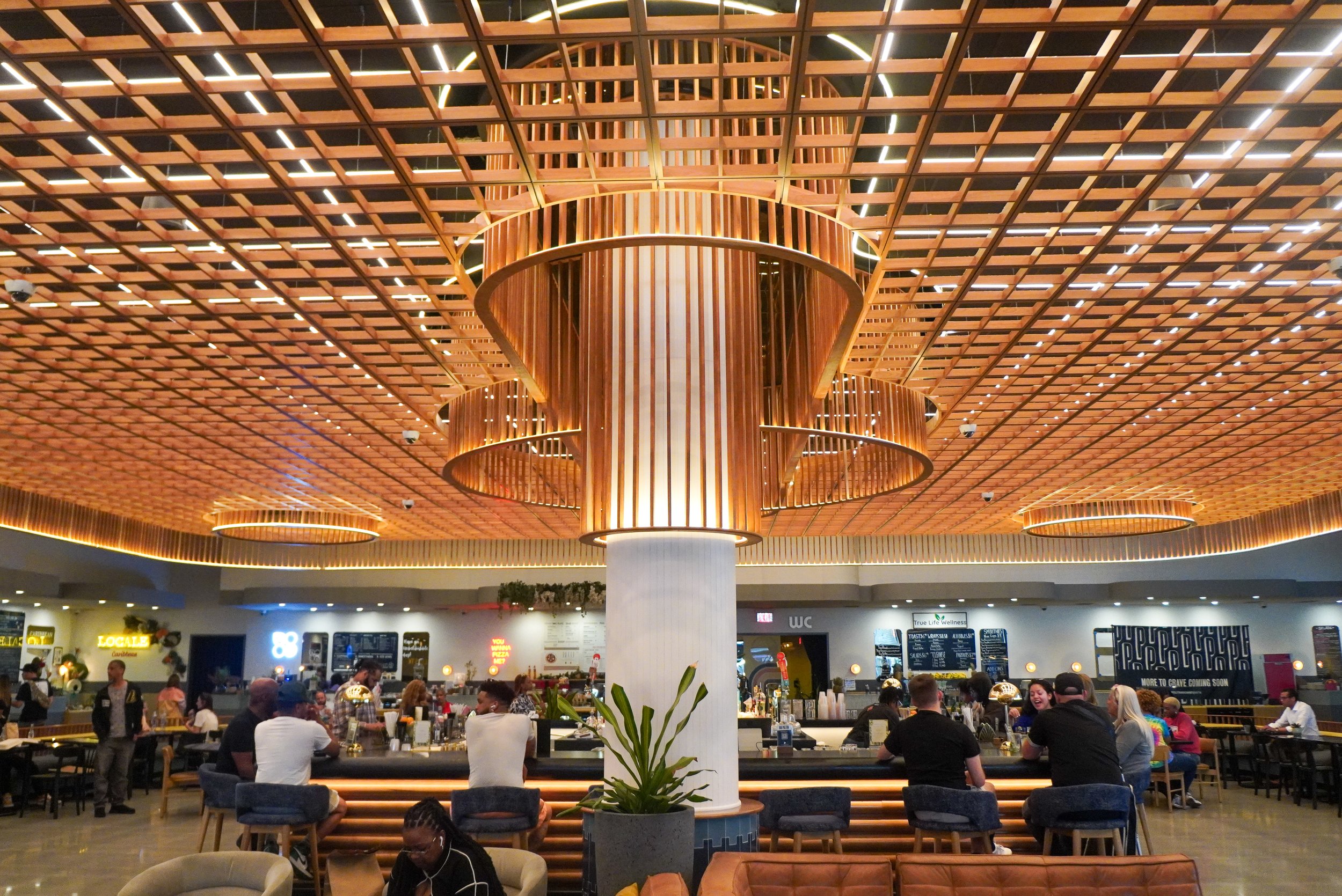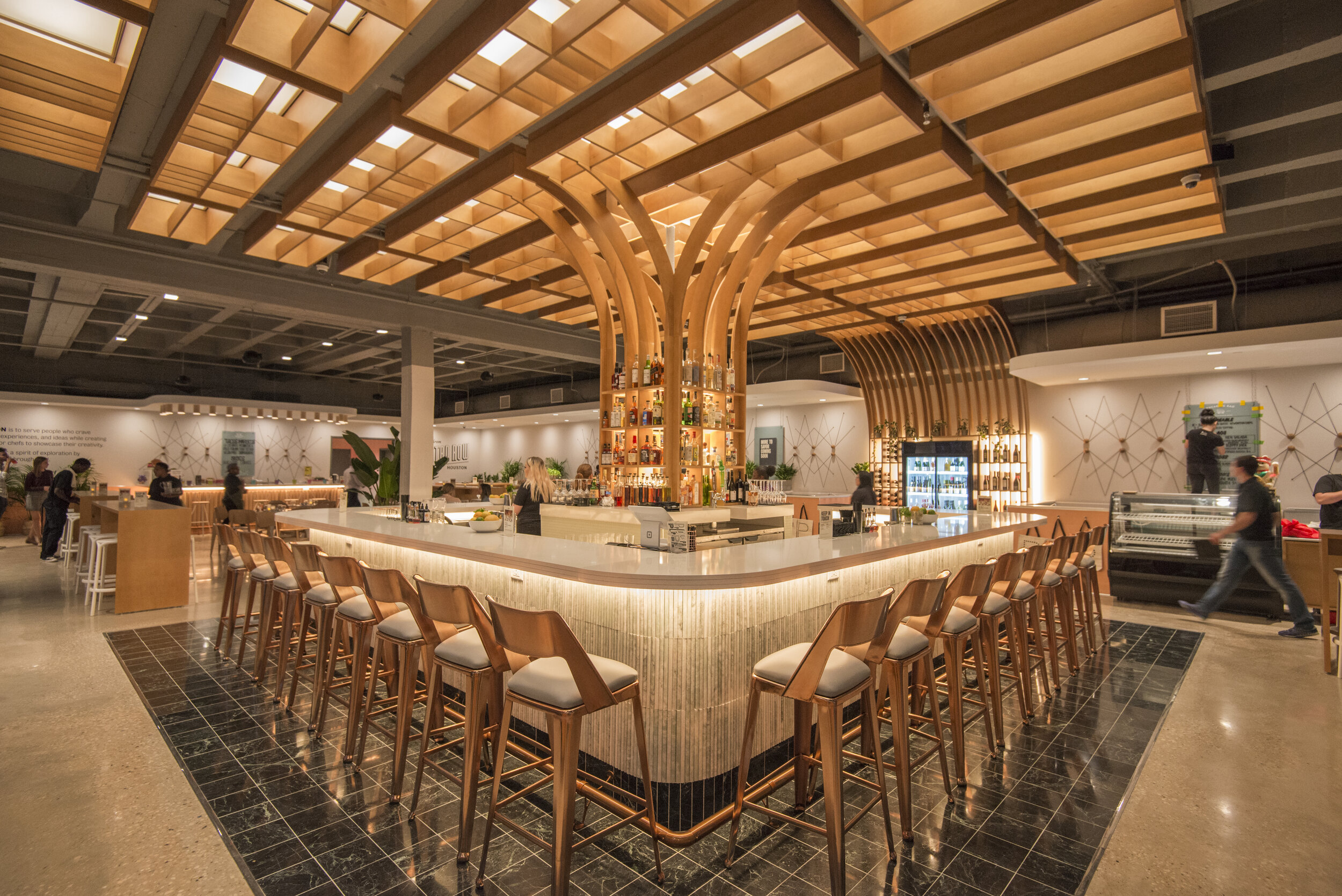Food Hall Math for the Developer/Property Owner
A developer or property owner typically seeks a food hall because it has the ability to drive thousands of shoppers to a destination thereby elevating the stature of the subject property, which, overtime, can increase the average rent psf and (hopefully) later realizes gains on the overall value of the property.
Income from food halls comes from the following sources:
Income from operations (passive lease income or ownership distribution)
Increased lease income performance of adjacent real estate
Brand sponsorship income
A good food hall will earn 16-24% net margin on operations at $500/psf in sales if it operates the beverage programs. Without beverage programs, assume closer to 9-12%. A developer seeking passive lease income should expect to collect 6-7% of the overall sales volume of the food hall to remain sustainable for both parties.
A developer utilizing a management agreement, should expect to net 15% of the sales volume after management fees to an operator, but can be 18-20% if the real estate performs exceptionally. Obviously, the management agreement is more lucrative for a developer with a proven property and an excellent manager. Some developers with tax advantaged structures may still be able to execute these deals by hiring a property manager and remaining passive.
How much should I be making?
A developer utilizing a management agreement, should expect to net 13-15% of the sales volume after management fees paid to an operator, but can be 18-20% if the real estate performs exceptionally. Obviously, the management agreement is more lucrative for a developer with a proven property and an excellent manager. Some developers with tax advantaged structures (REITs or Endowments) may still be able to execute these deals by hiring a property manager and remaining passive.
Food halls work best for developers when there is plenty of monetizable adjacency. Apartments, retail and office benefit greatly from food halls because the average consumer loves a food hall and perceives it as an amenity. If you don’t have the adjacent tenants to benefit from the traffic and sales boost brought by a food hall, then you’ll be missing out on a significant amount of earnings lift. In short, a food hall is best positioned as an anchor tenant of a larger development.
However, there is one big caveat. Food halls are traffic drivers but are also traffic hungry; Selling counter-service price points means you need a decent amount of volume. Properties must be able to accommodate that volume through parking, seating, routine cleaning, and security. There are additional property expenses to maintain the volume that both the development owner and food hall operator must consider.
For this reason, food halls can’t be the sole solution to a traffic problem. Yes, food halls bring traffic to a development, but they also require a significant amount of traffic just to function. The largesse of the operation assumes a higher base traffic assumption to achieve break even. If your location does not already have the traffic needed to for a food hall to breakeven, then there is a great risk that the food hall will not be able to bring enough additional consumers to achieve return goals. Do NOT open a food hall without a great parking solution. Do NOT open a food hall where there isn’t a consistent traffic source and retail visibility.
That just covers operating income, but what about return on investment?
One important aspect for developers building food halls is to try to avoid construction in the bases of high-rise buildings where ventilation is a huge challenge. This can easily triple the build cost of a food hall. It’s also a tough spend because the consumer perceives no additional value for the expended dollars. The most cost-efficient builds can be found in food halls that are single story because pre-packaged HVAC and hood systems can be used. This enables projects to fit within the underwriting standards of most developers regarding time-to-recapitalization.
While construction costs vary by geography, the number to know is that food halls are about the same cost to build as larger full service restaurants (by square foot) in the same geography. Ask what that rate is and use it as a budget guide.
Finally, developers are sometimes tempted to manage a food hall directly, because it feels like a tangential business. This can be tempting, and we would recommend that any developer seek the advice of peer developers who have tried it. Though it can certainly work, we find that most developers are surprised by the level of operational intensity involved with creating and managing an active, volume-oriented F&B environment.
.
The Bottom Line
1. Food halls should generate 13-18% net margins for developers using an experienced food hall manager operating beverage programs
2. NNN lease environments should target 6-7% occupancy and only from very experienced providers
3. Food halls should generate >$500psf in sales on gross square footages
4. They should cost <$500psf to build in 90% of geographical markets including the decor, FFE, and all hood venting
Politan Group specializes in operating food halls, bars, and bars within food halls. We also provide remote accounting, HR, and administration for food halls. Finally, we provide fractional management services for existing food halls where a team needs a leadership group that understands the business of food halls. If you are thinking of building a food hall or need help with an aspect of a food hall you already own, reach out to us. Politan is the most-awarded food hall operator in the industry.


